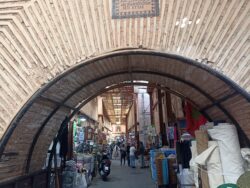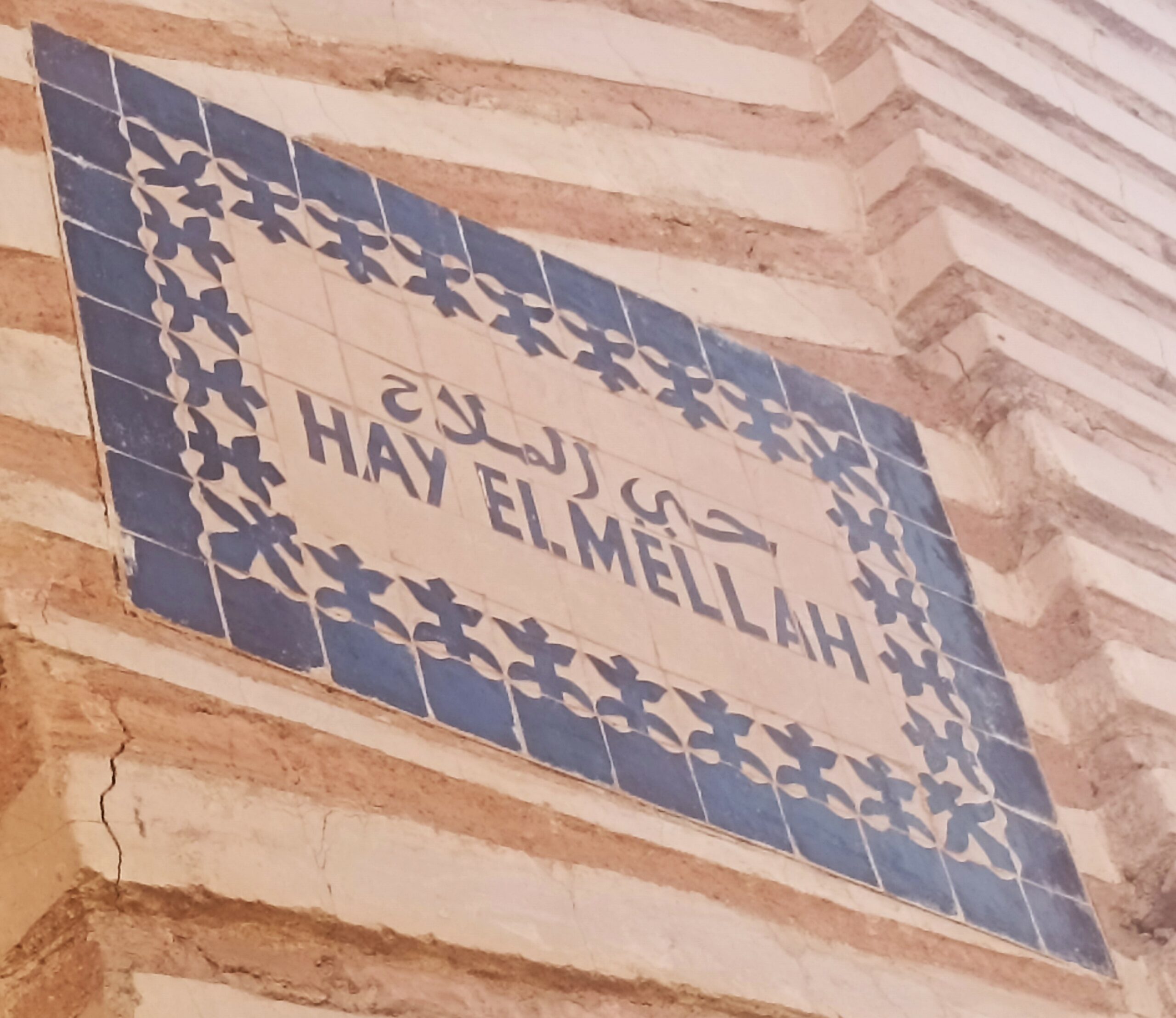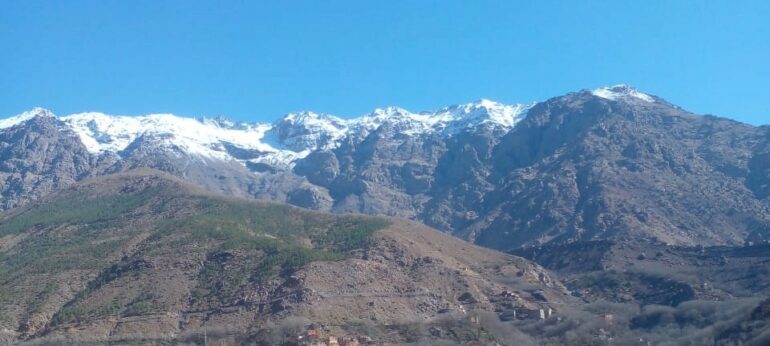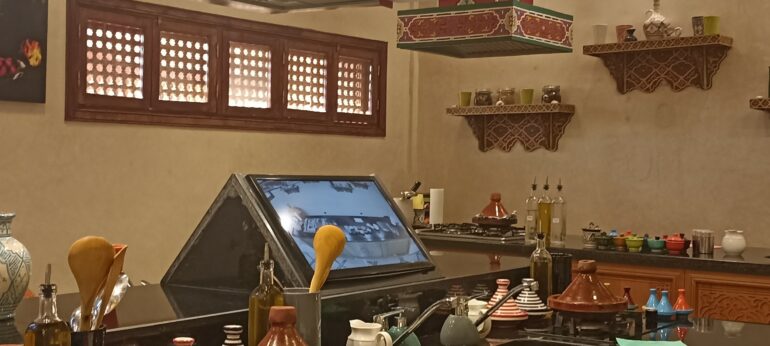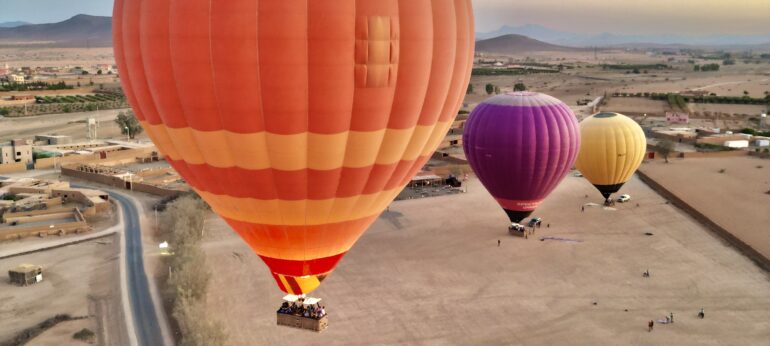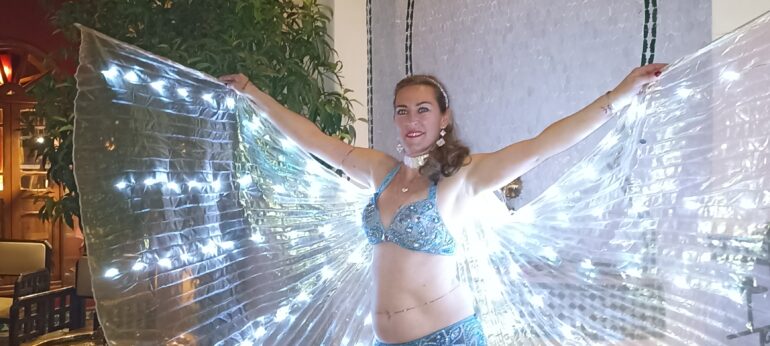ELIAS CANETTI, IMPRESSIONS OF THE MELLAH
In 1953, the writer Elias Canetti, Nobel Price in Literature in 1981, came to Marrakech for the first time. In his travel story « The voices of Marrakech » he seems captivated by the noises, the movements, and the crossed glances in the red city. His impressions, his encounters, his senses will guide and punctuate his stay. He spends a few hours in the Jewish district and in the cemetery. In the chapter « A visit to the Mellah » he tells about the contrasts , the poverty that is obvious in many streets and the luxury in some other areas or shops. He is struck by the presence of many beggars, their visible resignation but also the joy and dynamism of other individuals.
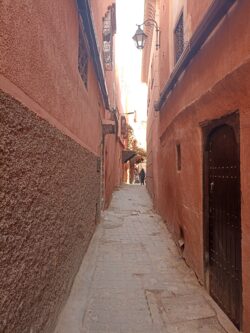
“The first shops I came to sold material. One man was measuring off silk. Another bent thoughtfully over his swiftly moving pencil, reckoning. Even the more richly appointed shops seemed very small.”
“I noticed how, the deeper I penetrated into the Mellah, the poorer everything became. The beautiful woolens and silks were behind me. No one loked wealthy and princely like Abraham. The bazaar by the entrance gate had been a kind of posh quarter; the actual life of the Mellah, the life of the simple people, went on here.”
“But there was something they all had in common, and as soon as I had accustomed myself to the rich variety of their faces and their expressions I tried to find out what it was; They had a way of swiftly glancing up and forming an opinion of the person going past. Not once did I pass unnoticed.”
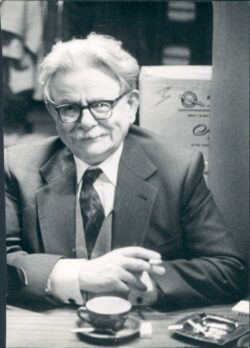
MELLAH
In Morocco the word Mellah refers to the areas where the Jewish Moroccan citizens lived for centuries. The Mellah in Fes, dating from 1438, is generally considered as the oldest one of the Kingdom. The Mellah in Marrakech seems to have been established in 1558, under the reign of a Saadian Sultan.
THE JEWISH COMMUNITY IN MOROCCO, SINCE SOLOMON?
The oldest traces, symbols and inscriptions which indicates a Jewish presence have been found in Volubilis, a Roman city of the 2nd century BC near Meknes and Fes. But we can easily imagine that a few Jews arrived in North Africa with the Phoenicians who ruled these coasts during the 10th century B.C. They continually established in the towns, villages and mountains in harmony with the local populations. After the birth of Islam and the conquest of North Africa by the Arabs, the Jews will live, more or less quietly, under the various Muslim dynasties. They will benefit from a special status and freedom of worship. The Jewish community will experience good and bad times. A great portion of the Spanish Jews, expelled in 1492, will naturally settle down in the different zones of Morocco. The intellectual influence of this diaspora, its frequent and continuous links with Europe, its role in economic development will definitely and indelibly mark the history and culture of the Kingdom.
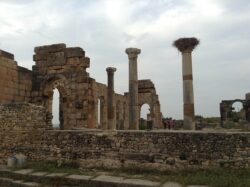
A GHETTO ?
The « Mellah » are not closed zones like the ghettos. Everyone can go out and get in. Jews are encouraged to inhabit these areas, in order to be protected, to carry out business. The « dhimmis » (Jewish residents who pay specific taxes) gather in these districts in close proximity and work as goldsmiths, tailors, haberdashers, jewelers, shoemakers, woodworkers…
Obviously throughout the centuries, according to the periods and the regimes, many incidents, clashes and confrontations will tarnish the supposedly peaceful co-existence between the Jews and the Muslims. Then in the Moroccan cities with the advent of the French Protectorate started, the Mellah will lose their community-based aspect and their discriminatory effect.
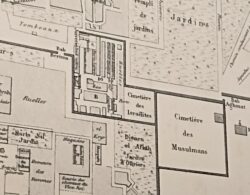
MARRAKECH
The Mellah of Marrakech, situated near the Mechouar (Royal Palace), is a fortified district whose doors are closed at night and becomes one of the most important commercial zones of the city. Nevertheless, it is confirmed that it has always been a poor, even miserable area. Until the 1940s there were about 27000 inhabitants. It was the largest Mellah of Morocco, having up to 35000 residents. It was home to numerous schools, rabbinical centers, talmudic institutes, which trained several scholars and Rabbis. By the late 1950s the Mellah starts to lose its inhabitants. Many Jewish families decided to leave the country, being torn between the events in Algeria, the Israeli-Palestinian conflict, the Yom Kippur war and the Alya, a possibility to emigrate to Israel. Many houses remained unoccupied, some fell into ruin. After an operation of rehabilitation, the district attracts newcomers. At one time referred to as Essalam (peace), it returned to its original name El Mellah in 2017. At the instruction of his Majesty the King Mohammed VI, the streets, the alleys, the houses, the synagogues and the cemetery were restored.
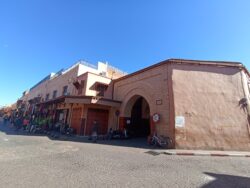
In his book « The Rabbi of a thousand lives », Haïm Harboun recounts his childhood in the 1950s in the Marrakech Mellah:
“Life in the Mellah was a permanent fight, on one hand to survive and eat, on the other hand not to die from typhus or any other disease which exists in the books but that the European doctors have not diagnosed since at least a century.”
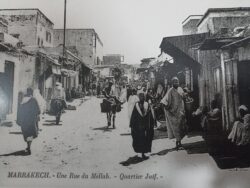
“We could describe the Mellah as a warren of buildings and cluster of people on a small surface. The Mellah was a closed area surrounded by a clay-coloured wall. The inside was totally sordid with decayed cob houses. A labyrinth of dark and narrow alleys with many synagogues.”
“In the north the rich families used to live in their two-storey houses with a small courtyard and, as a sign of luxury, a central fountain and a few plants. Most of the whitewashed houses had no tiled floors and no electricity. We would save on everything particularly the oil for the lamps. Poverty, misery, diseases and death would reign in this promiscuity and the Jews would maintain an elegant appearance, because of their pride.”
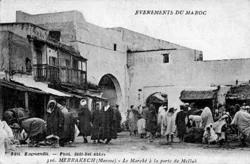
TODAY
Today the tourists like to scroll through the streets of the Mellah. Sometimes you can also see some Jewish families, seeking out their roots, visiting the district with emotion. Only a few descendants live there today. If the Jewish identity is less significant today, the footprint of the culture is still essential in the specific architecture, even visible by the professional activities and shops. It is a great confusion of contrasts, colours, fragrances. There’s a strong animation between the tiny shops.
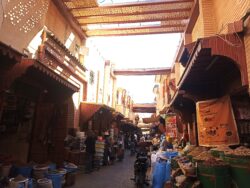
Here the unfindable can be found! Are you looking for an uncommon jacket button you lost a long time ago? It might here in the large drawer of a haberdasher! Are you desperately looking for a wool thread with an improbable colour? It might be here around these colourful bobbins! Would you like to smell again this peculiar and exquisite fragrance of your childhood? It might be here, somewhere in the middle of the spices and essential oils!
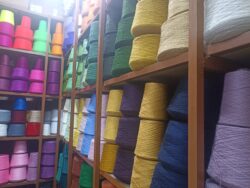
A tour in the Mellah would not be complete without the visit of the synagogue and the cemetery.
THE SALAT AL-AZAMA SYNAGOGUE
There was a time, not so long ago, many synagogues were scattered in the Mellah. They have been abandoned over time. The historical synagogue called the synagogue of « expelled » was erected in 1492. It had been commissioned by Rabbi Yitzak Daloya who, himself, had been expelled from Spain in the same year. The current synagogue was built at the turn of the 20th century. You discover it in a long alley. The riad has a large Andalusian blue patio with trees and small rooms both on the ground floor around the patio and on the first floor with access via a corridor overlooking the patio. Different exhibitions are presented as well as historical documents or pictures. The sanctuary, a rectangular main room for prayer together, is ornamented with blue tiles, furniture and carpets.
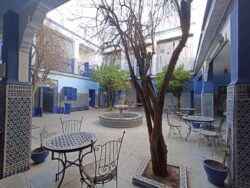
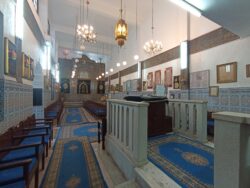
THE MIÂARA CEMETERY
The cemetery of Marrakech, was founded in 1537 and is the largest one of the Jewish communities. There are corners for men, women and children. One is dedicated to around 7000 children who died during a typhus epidemic in the 19th century. Here are buried the most famous Rabbis, scholars, who taught the Torah.
It has recently been cleaned and weeded and is well maintained. The place is really awesome and impressive. Astonishment and emotion arise in front of these thousands of white graves, most of them anonymous, laid under this deep blue sky, framed by the ochre walls and the Atlas peaks.
At the entrance can be read: “Let those who dwell in the dust wake up and shout for joy— your dew is like the dew of the morning…” Isaiah 26.19
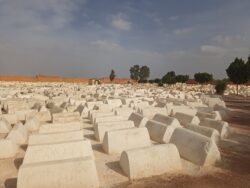
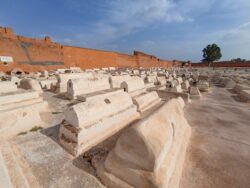
MELLAH FOREVER…
Visiting the Mellah nowadays is like reading a long chapter of the history of Morocco and the city of Marrakech. The Jewish culture, like the Berber culture, is a fundamental page of the identity of the country. The district is really picturesque and unique.
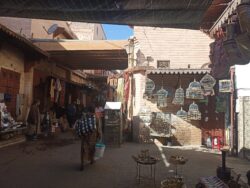
If a few zones are still a bit deprived, now several guesthouses are opened in the heart of the area. Rehabilitation and renovation going on, the residents feel less abandoned and marginalized. The earthquake in September 2023 has damaged many houses. People will be rehoused, Plans for demolition and reconstruction are being made together with financial aid.
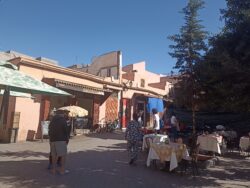
It is undoubtedly a new impetus to the neighbourhood. The Mellah can also look into the future without forgetting the hours of the past, the blessed ones and the sad ones, that weave the threads of universal history.
